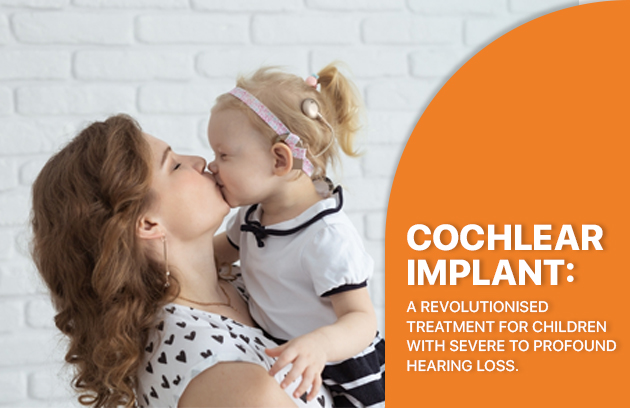A cochlear implant is a small, complex electronic device that is surgically implanted into the inner ear to provide a sense of sound to a person with severe to profound hearing loss and deafness. The implant consists of two main components: an external microphone and speech processor that sit behind the ear, and an internal receiver and electrode array that are surgically placed under the skin. The device works by bypassing the non-functioning parts of the ear and stimulating the auditory nerve, which sends signals to the brain. A cochlear implant has the following parts for the complete working procedure:
Microphone: It picks up sounds from the environment.
Speech Processor: Selects and arranges the sounds picked up by the microphone.
Receiver/Stimulator and Transmitter: It receives signals from the speech processor and transforms those signals into electric impulses.
Electrode Array: It is a group of electrodes that receive impulses from the stimulator and send them to different regions of the auditory nerve.
A cochlear implant provides a useful presentation of sound in the environment that allows the individual to understand speech.
Cochlear Implants in Children for a Better Hearing Future
Cochlear implantation has revolutionised the treatment of children with severe to profound hearing loss who are getting limited benefits from hearing aids. Cochlear implantation into the inner ear of a child directly stimulates their hearing nerve, which allows them to perceive sound.
Placing a cochlear implant in a child’s ear requires an outpatient surgery, and then the audiologist helps the child “learn” how to use the device. An efficient training of children with expert professionals, including a team of audiologists and speech-language therapists, ensures that the cochlear implant is being used in the best possible way and supporting the child’s development.
At What Age Can Children Get Cochlear Implantation?
A cochlear implant hearing aid may be needed for the children, for whom hearing aids are unable to provide sufficient hearing to support their speech and language development.
According to the U.S. Food and Drug Administration (FDA), for children with bilateral profound hearing loss, the age of 12 months and older can be the perfect age for cochlear implantation. Early cochlear implantation, especially before the age of two, can be expected to help children meet their typical developmental milestones and increase their chances of integrating into mainstream educational settings.
What Is The Process Of Cochlear Implantation?
A child with hearing loss first needs to undergo psychological and audiological testing. If the child is a suitable candidate for implantation, then the next step is usually implantation surgery.
Audiologists use general anaesthesia, during cochlear implant surgery, which typically takes two to four hours. Then, after the internal components have been placed, the audiologists ensure that the surgical site is healed before they place the external device. The procedure of cochlear implantation in children usually involves the following two steps:
Step 1: Fitting
After four to six weeks of implant surgery, the child will be fitted with the external device. The audiologists activate the cochlear implant mapping. Then they “turned on” the cochlear implant that allows the child to experience better sound for the first time.
Step 2: Fine-tuning
As the child begins his or her new hearing journey, the next step is other fine tuning and adjustment of the cochlear implant map. Children can need several follow-up visits over a few months to adjust the mapping of the signals to the electrode and to help them become accustomed to their device.
What Should Parents Expect After Cochlear Implantation In Children?
The cochlear implant in a child will be activated a few weeks after surgery. After that, the expert audiologist helps the child determine the best setting for the cochlear implant. Other specialists, such as a speech-language therapist, help the cochlear implant function at its best.
Early implantation of a cochlear implant (around 12 months old) provides the ability to allow hearing-impaired children to develop normal speech and spoken language.
Conclusion
A cochlear implant helps the child with hearing loss or deafness hear sounds, which improves their ability to communicate and interact with others. It offers long-term outcomes to the child and improves safety by allowing them to hear only important sounds. Cochlear implants can improve the quality of a child’s life with hearing loss by allowing them to participate in activities such as social events, watching TV, and talking. Hearing loss causes speech and development delays in children, so early implantation of a cochlear implant allows those children to interact with their surrounding environment to reach their true potential.

